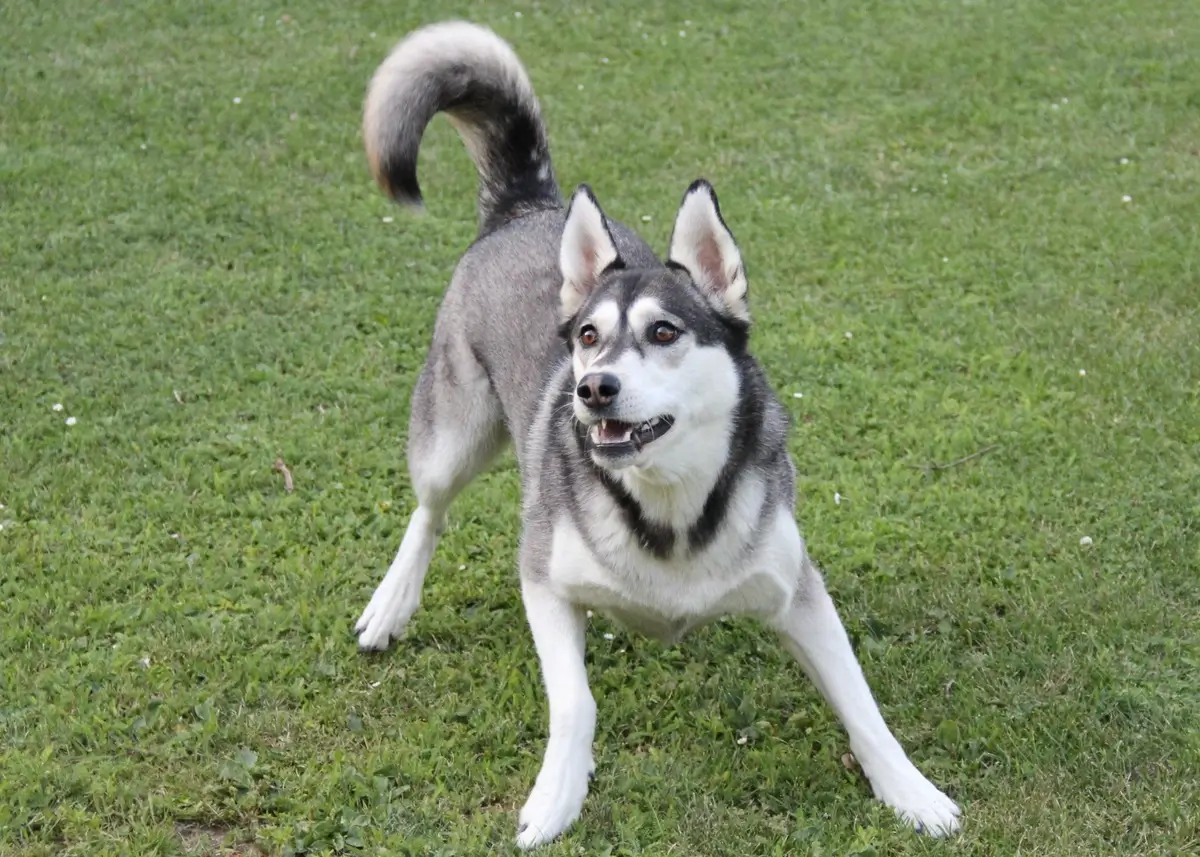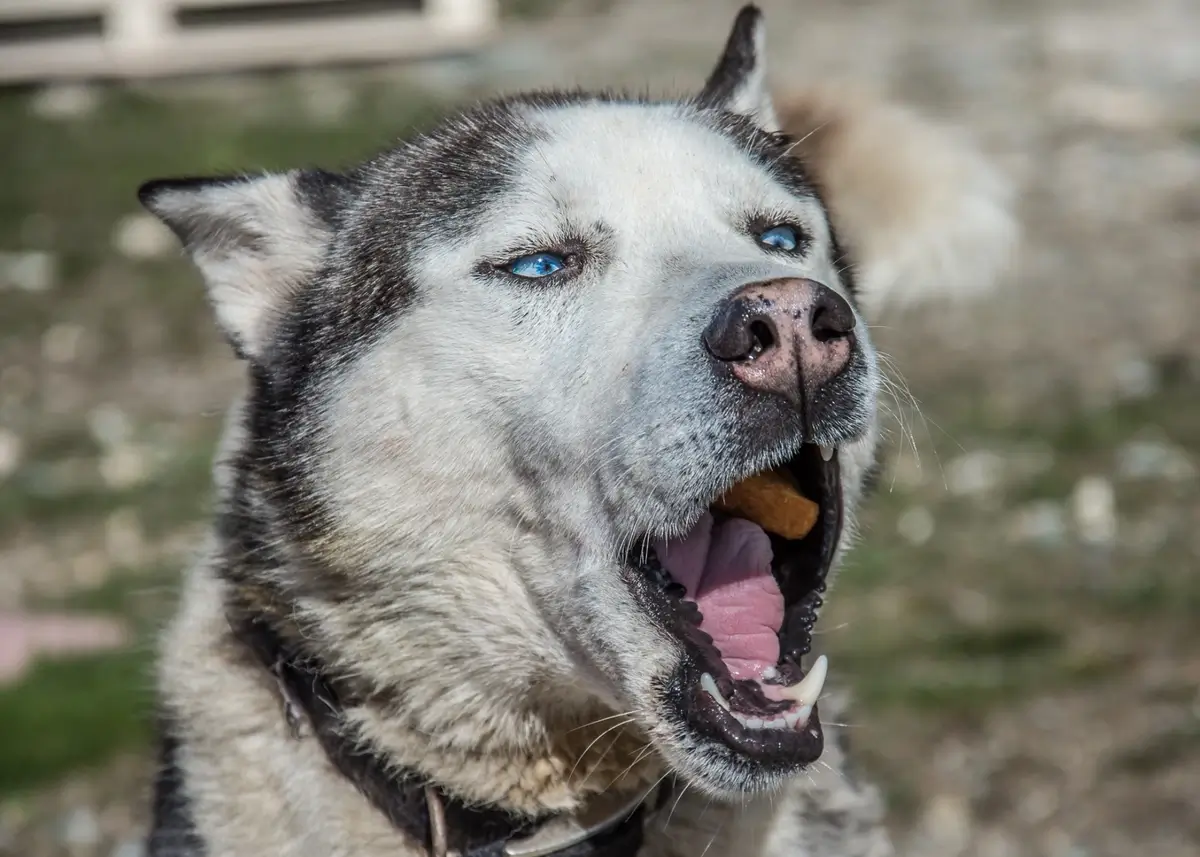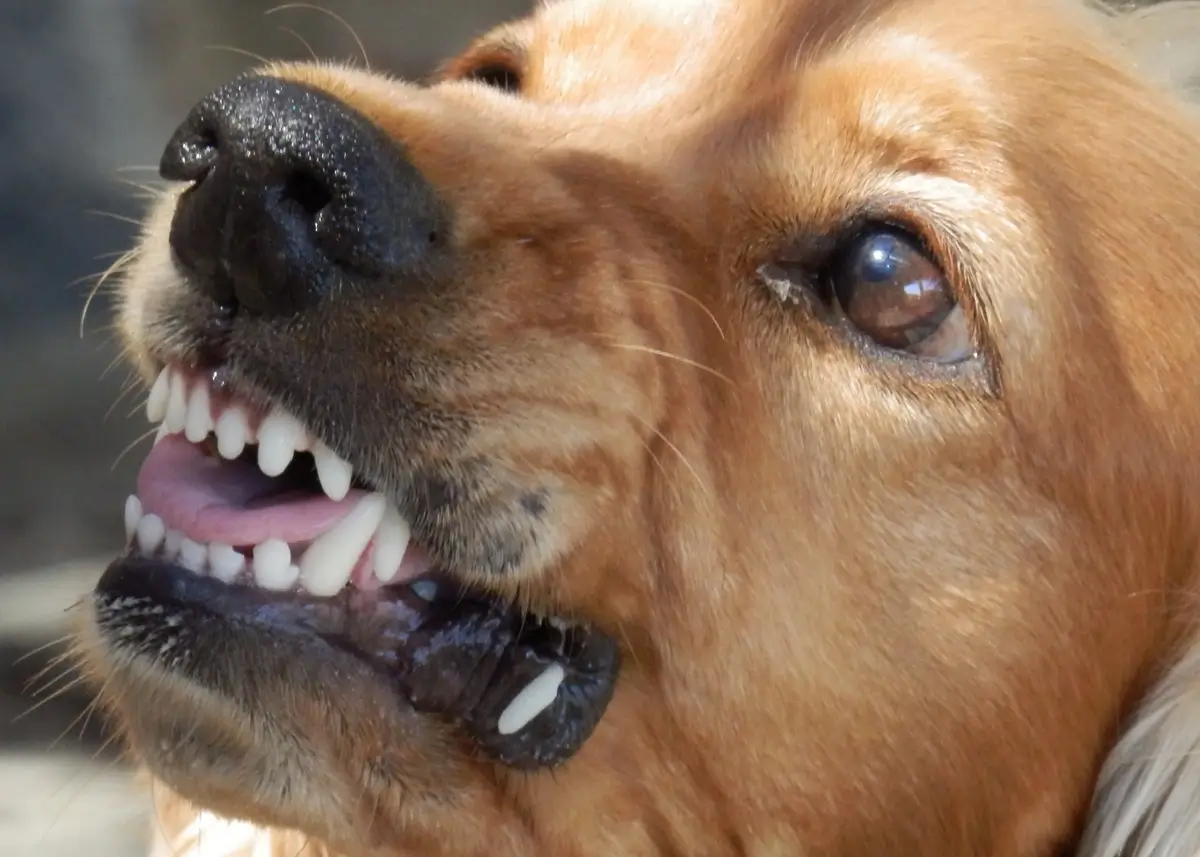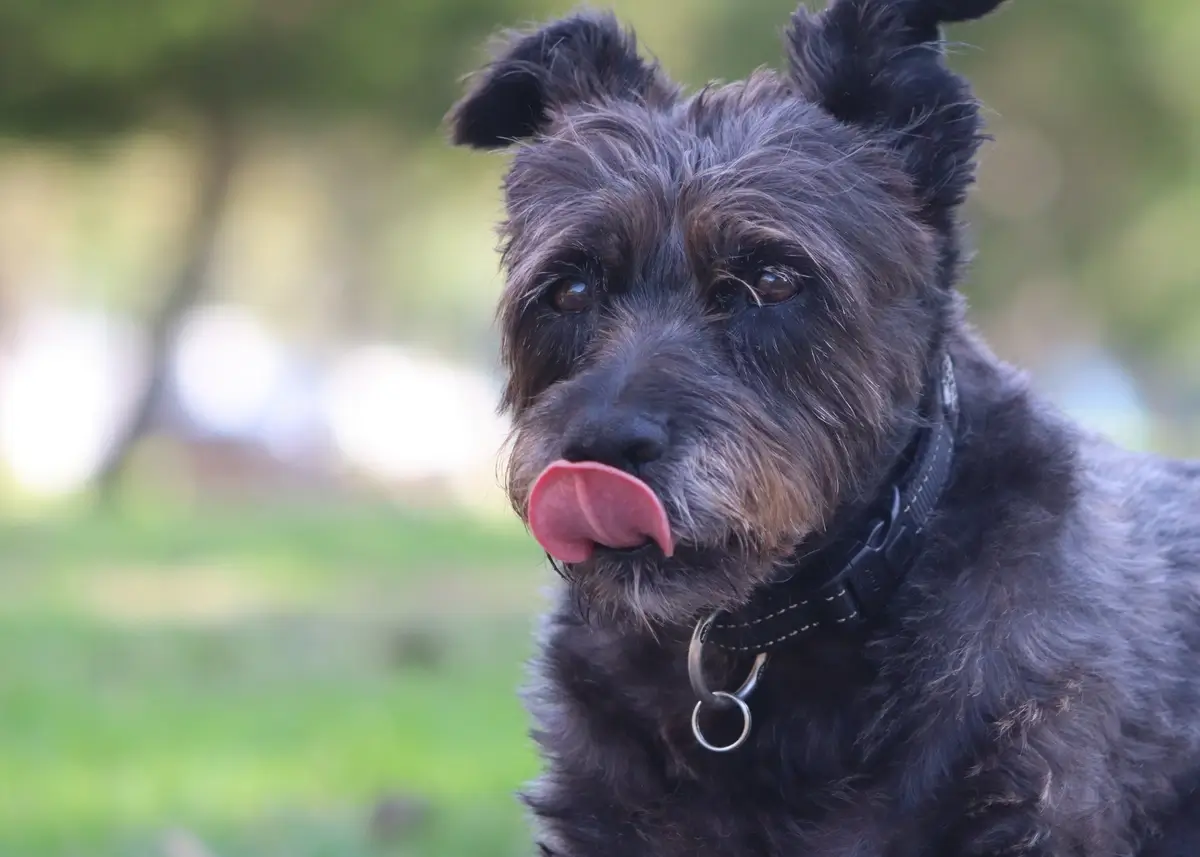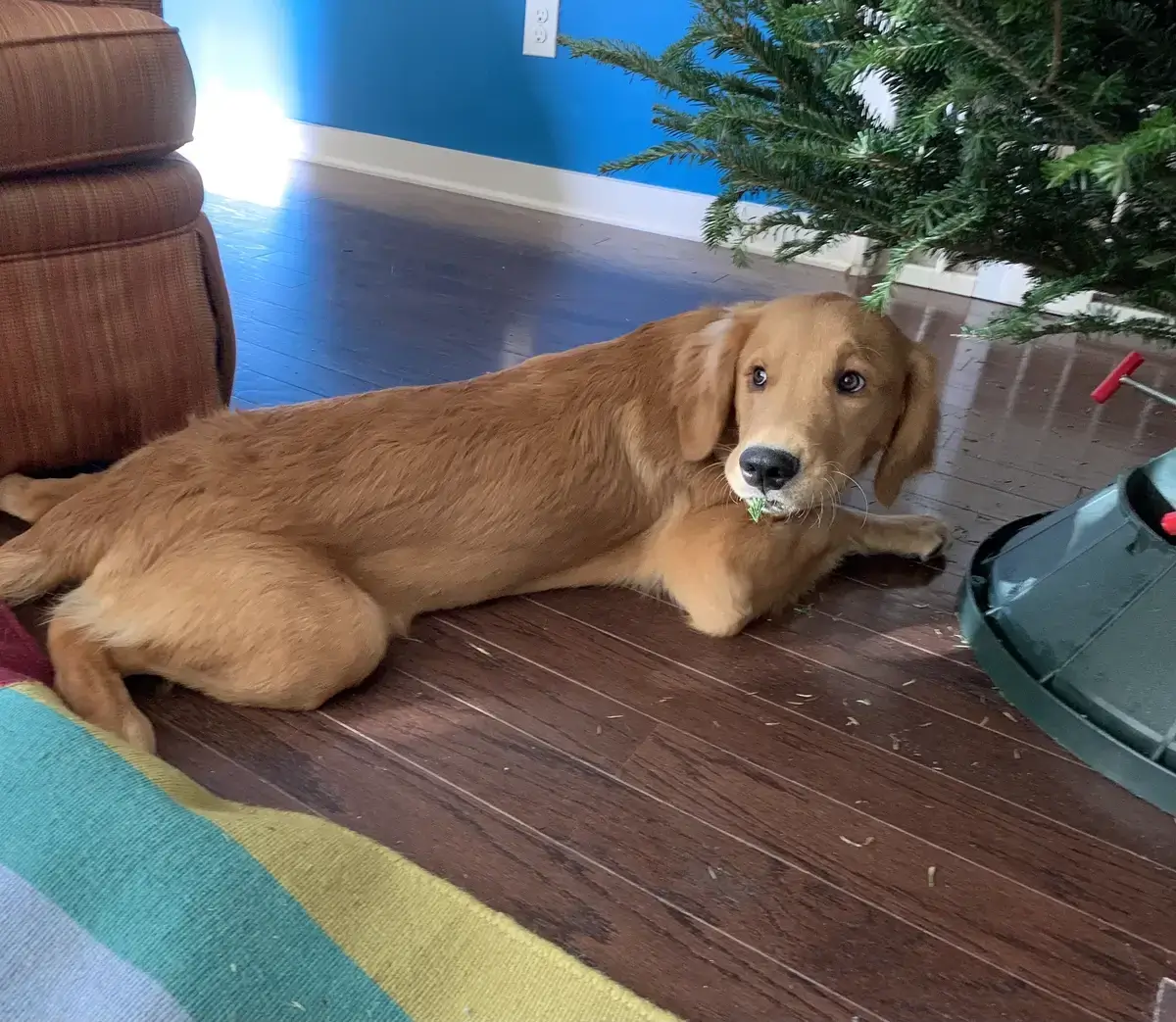Have you ever dreamed of what your puppy would sound like if he could talk to you? Do you wish your puppy could just speak to you? We know we sure do!
You’d have long conversations over treats and a cup of coffee about your upcoming promotion at work or compare the latest neighborhood gossip. Perhaps you’d share your hopes and dreams or tell each other bad dad jokes.
Knowing how to read your dog’s body language is an essential skill for every puppy parent to have. Learn how dogs communicate with humans through body language and sounds.
How Do Dogs Communicate With Humans?
Until our dogs start miraculously speaking to us, we’ll have to rely on non-verbal communication in canines. Dogs “tell” us about their state of mind through body language, which includes facial expressions, sounds, and body, tail, ears, and eye positions.
We may assume that because dogs and humans share some of the same mannerisms we can naturally interpret their emotional state. However, you may be misinterpreting the canine response to the same stimuli.
For example, some common behaviors you may misinterpret in your dog are tail wagging, yawning, and facial expressions. We’ll learn more about what each of these can actually mean once you are familiar with interpreting your puppy’s body language.
Understanding Your Puppy’s Body Language
Dogs and humans may have some of the same mannerisms, but learning what they can mean when applied to a dog’s world will have you effectively communicating with your pup in no time.
Tails
One of the most common misunderstandings between puppies and humans is correctly interpreting the meaning of a wagging tail. Did you know that just because your puppy’s tail is wagging doesn’t necessarily mean he’s happy and relaxed as we’d assume?
Wagging Tails
A wagging tail just means a puppy is emotionally aroused or stimulated. The faster your puppy wags, the more emotionally invested your pup is in the situation. Puppies can wag their tails when excited, frustrated, or alert.
Tail and Body Position Together
You can also look at body position when you see a tail wagging. If your dog is stiff and fixated on something while either rapidly wagging his tail or with a still tail, it means he’s tense and on high alert. If your dog’s behind is also wiggling and they’re greeting you with a full-body wag, then you can correctly guess your puppy is happy to see you.
If a dog holds his tail high in the air, it may mean he’s feeling aggressive or even confident. A tail lower to the ground, especially tucked in between the legs, means your dog is scared, nervous, or fearful.
You may be wondering about breeds that have tails naturally lower to the ground or that stay curled upright. The key to interpreting tail wagging is to know where your dog’s tail falls naturally so you can notice any changes in its normal state.
Research on Tail Wagging
Did you know the angle and direction of a dog’s tail wag can also be used to communicate an emotional state? A scientific study examined dogs’ wagging tails to see how the left and right sides of dogs’ brains processed stimuli when shown an unfamiliar, imposing-looking Belgian Malinois, a cat, a human stranger, and their owners.
Researchers found that dogs wagged their tails more to the right when they saw their owners and slightly less when they saw a stranger. When viewing the cat, wagging decreased, and all 3 were on the right side. But when faced with the dominant unknown canine, dogs wagged their tails more to the left side. The faster the tail wagged, the more emotionally aroused the dogs were feeling. Research studies such as this one can demonstrate how a dog’s brain processes emotional stimulation so we can learn more about canine behavior.
Mouths
What a dog does with its mouth can be a form of talking to you without saying a word. Here are some ways puppies communicate using their mouths.
Yawning
It may be endearing to learn that yawning is also contagious just like it is in humans! Try it – the next time you yawn, see if your puppy follows suit.
However, when your dog yawns, it doesn’t mean they’re ready to snuggle under their special blanket for a (hopefully) long night of rest. Yawning can be a sign your dog is feeling anxious, stressed, or nervous about something.
Showing Teeth and Smiling
A dog with a relaxed jaw with a resting tongue can appear to be smiling at you. This mouth position indicates your puppy is in a relaxed, neutral state. A clenched jaw means your puppy is distrustful or wary of something in her space (or just defending you from falling leaves).
Just because a puppy shows teeth at you does not always mean they’re snarling at you. For example, a Golden Retriever puppy can show you his teeth when he’s happy to see you after being away, but it’s a happy “snarl” that is actually a smile.
Sometimes a dog really is snarling at you! Watch for lips that are curled back, a stiff body position, intense eyes, and listen for growling. Your dog is definitely telling you to back off.
Lip and Paw Licking
When your puppy licks her lips, she’s not necessarily hungry or cleaning her mouth after eating, although that could be the case. Most of the time though, lip licking indicates she may be nervous about a situation.
When your puppy licks you, it could be a sign of affection. But before you let out an “Awww!” you may be slightly disappointed to know it could also just mean your puppy likes the taste of your leftover food residue, sweat, or body products like soaps or lotions.
A few quick licks of the paw are okay, but pay attention to any excessive paw licking. If you do notice your puppy doing this, examine her paws to see if you detect a cut, thorn, or a tick. A vet can help you determine if your puppy has allergies or yeast issues.
Vocalizations
Dogs can communicate beyond just barking. They can whine, sigh, growl, grumble, grunt, yip, howl, and all sorts of sounds unable to be categorized. Combined with your puppy’s personality, you’ll be able to figure out what the noises are trying to say, which ones are normal, and which ones require your attention.
For example, your puppy may make little grunting noises to show pleasure when you rub her head. A low, short “woof” may be your puppy demanding attention. Siberian Husky puppies are famous for their howls and other vocalizations that really do sound like they’re talking to you!
Eyes, Ears, and Coat
Eyes
You can learn a lot about a dog’s temperament at the moment by looking at what their eyes are doing.
If a dog stares into your eyes, you swear she’s trying to see right into your soul. Before you get poetic, you should also look at other signs to see if your dog is relaxed or tense. A threatened dog may stare directly at you as a form of aggression. On the other hand, an eager stare might mean “Play with me! Pay attention to me!”
If your dog averts her eyes and won’t look at your face, you may think she’s choosing to ignore you. Not making eye contact with you actually means she is experiencing some discomfort. Your pup may also be afraid of a consequence, like when she knocks over the trash can and seems to know she’s done something naughty. Dogs widen their eyes when they feel very stressed or aggressive, revealing the whites of their eyes.
Ears
Because all dog breeds have a wide range of ear shapes, pay attention to your dog’s normal ear position when in a calm, neutral state.
Flattened ears on their heads mean they’re scared or anxious. Puppies turn their ears forward when they’re curious about something.
Coat
Dogs experience hackles when the hair on the back of their neck and down their spine stands up. Showing raised hackles doesn’t always mean a dog is wary or afraid. It also indicates emotional arousal just like a tail wag. If you see raised hackles on dogs in a dog park, notice the other body language indicators like staring, tightened bodies, lunging, and baring teeth.
Body Position
Take a (Play) Bow
One of the most recognizable body positions a dog can have is the play bow. It even has a yoga position named after it – downward dog! When a puppy has his rear in the air and is bowing at you, it’s a friendly invitation to play.
A puppy is also in a downward dog position when she stretches as a way to relax.
All paws on deck
Another adorable way a dog uses her body to communicate with you is when she puts her paw on you or her head on your lap when you’re sitting down. A paw can mean she’s feeling close to you and wants you to pet her. It’s a sweet way of showing you love and affection in case you’re wondering how to tell if your dog loves you.
The frog sploot
When a puppy stretches out with his feet straight out in all directions looking like a frog, your dog is in the “sploot” position. Depending on the breed, sometimes the back legs can look like plump little turkey legs! When a dog is in the sploot position, they’re content, stretching, or looking for a cool spot. You’ll often find them with a ball or toy in their mouths as well.
Rolling onto the back
Most of us are familiar with puppies wanting a belly rub when they roll over onto their backs. Puppies can also roll over when meeting other dogs to show they are submissive. The key is to look for other signs to see if they are truly scared or just interacting with another dog in a friendly way.
Shaking, shivering, or trembling
We all know dogs love to shake themselves after a bath, especially right before we’re prepared with the towel! If your dog is shaking, shivering, or trembling, check to see if your dog is terrified or stressed, even moderately so. If not, your dog is probably just getting the wiggles out with shakes and shivers or as a way to soothe themselves.
Head turning
You swear your puppy understands what you’re saying when she turns her adorable little head to the left and right when you speak to her. Some say it’s because she’s finding the most optimal angle for hearing instead of trying to decipher your human words into doggy thoughts.
Back weight shift
When your dog is faced with a stressful encounter, your dog may shift his weight to his back legs, as if to say, “Let me get as far away as possible from this without moving!” Cowering and lowering his body to the ground also shows your puppy is making himself as small as possible to avoid negative stimuli.
Turning in circles
Seeing a dog chase its own tail is always a hilarious sight! Dogs turn around when they’re excited and for many other reasons. Dogs’ wolf ancestors turned around to make their beds before lying down, so that may explain why a dog circles before plopping down to rest. A puppy may feel vulnerable and instinctually turns around to get a 360-degree look for possible threats before doing his business.
The Zoomies
Some dogs get the Zoomies, a sudden burst of high-energy activity like zooming around the yard, running in circles, jumping up, and even peeing a bit from the excitement. Zoomies can happen at random times but also after a somewhat stressful event such as a bath or being in a crate for a long period of time.
We Speak Your Language at Pawrade
We know great communication is key when helping you find a puppy for sale. We work with our trusted breeders to ensure the health and well-being of each puppy placement and keep you updated every step of the way.

